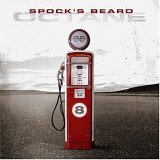I’m a big fan of alternate histories. The two GURPS Alternate Earths books published a few years back for the old 3rd Edition of GURPS are among my all-time favourite RPG sourcebooks. Still, it rather surprised me when I first heard that Steve Jackson Games had chosen to make this meta-setting the core background for the fourth edition of GURPS 4th Edition of the Generic Universal Roleplaying System. Although the previous AH books were superb pieces of work, Alternative History and Time Travel games have never been hugely successful commercially.
Genius conspiracy theory expert Ken Hite took on the task of taking the existing hard-SF Alt-History of Alternate Earths and adding some of his trademark ‘high weirdness’. Hints over the internet in the preceding months promised the addition of sinister occult conspiracies and terrifying extradimensional Things Mad Was Not Meant To Know (think Lovecraft minus the seafood) and just about everything else. This would give us a game setting which encompasses swashbuckling adventure, hard science fiction, high fantasy or dark horror, or all of these at once.
In the hands of a lesser author, there’s a grave danger than it would turn into a cheesy Abbott and Costello style monster mash. But has Infinite Worlds managed to avoid that fate?
Chapter One, Infinity Unlimited describes the world called Homeline, a world not unlike our own, but a world where a physicist named Paul van Zandt discovered the means of travelling between worlds, and ultimately founded the Infinity Unlimited, a corporation chartered by the United Nations to explore these alternative worlds.
The bulk of the chapter is given over to the Infinity Patrol, a likely employer of player characters. They’re described as a supranational paramilitary agency, under Infinity’s control, dedicated to protecting Homeline, ‘The Secret’, Infinity itself, and the unknowing innocents of other worlds, in roughly that order. ‘The Secret’ is the knowledge of parachronic travel, which must never be revealed to the inhabitants of other timelines! The chapter describes the mission and goals of the Infinity Patrol, their structure, technologies, and something of the physics of dimensional travel. As well as the Patrol, there are other timeline-hopping outfits licenced by Infinity, from the interdimensional White Star Trading, who actually provide Infinity with much of their revenue, Time Tours, who send parties of tourists to relatively ‘safe’ timelines, and the interworld mercenary company Alternative Outcomes.
Chapter Two, Enemies Everywhen describes the principal villains of the setting. It starts with two parallel worldlines that have discovered the secret of parachronic travel.
First is the technocratic and vaguely communistic Centrum, seemingly intent on taking over every parallel world they can get hold of. Their parachronic technology works on similar principles to those of Infinity, albeit with subtle differences. Centrum are not completely evil, but they are totally ruthless and believe the end justifies the means. They tend to operate in the shadows, taking over existing power structures from within rather than using brute force. For a shades-of-grey cloak-and-dagger style of game, they make a worthy adversary for the Infinity Patrol. It’s even possible to make Centrum the good guys, with a darker version of Homeline becoming the villains.
For a far nastier enemy, there’s Nazi-dominated Reich-5. A world where the axis powers won World War II fifty years ago, and an aggressive high-tech Germany and Japan now rule the entire globe, they’ve gained access to a limited number of other worldlines with the aid of Aryan occult mysticism and some psionic bio-tech that’s unpleasant enough to warrant being called black magic. Now they’re slowly spreading their reign of terror across other worlds. Unlike Centrum, they don’t go for subtlety when brute force will do the job, and have no qualms over unleashing high-tech firepower on the inhabitants of primitive worlds. The only thing slowing them down is that their form of dimensional travel won’t let them move a great deal of heavy equipment from world to world, so their offworld stormtroopers tend to be relatively lightly armed and equipped. They’re the foe for games when you want an old-fashioned morally unambiguous Good versus Evil slugfest.
Then there’s The Cabal, a world-spanning alliance of enigmatic entities such as immortal sorcerors, vampires and other assorted supernatural beings. The Cabal make an opponent for a game focussing more on horror or dark fantasy. Finally Homeline has villains of it’s own, from corrupt corporations to organised crime syndicates extending their tentacles beyond one Earth.
And I haven’t even mentioned the parachronozoids or the reality quakes yet.
Next, Present at the Creation is a toolbox for creating your own parallel worlds. It gives a lot of advice on creating plausible histories. First it describes the various kinds of infinite worlds; from Echoes (copies of homeline at an earlier point in time), close parallels (like Homeline but with a few minor social or cultural changes), further parallels (with major changes in history), high inertia parallels (changes in history centuries or millennia ago, but which still retain recognisable cultures), and myth parallels (those that resemble mythologies, or even popular fantasy fictions). I personally find the last of those rather silly, and won’t use them in any Infinite World games I ever run! Your mileage my vary, of course.
It contains a random world generation system, in which you roll in turn on tables determining technology, number and type of major civilisations, and the government structures of each. To test this, I came up with a world of modern-day technology, dominated by a caste-based West African empire, and a bipolar Japanese/Chinese civilisation, comprised of a dictatorship and an oligarchy.
Worlds Enough gives a couple of dozen ready made parallel worlds; each described in a couple of pages. Many of these are old favourites from the two Alternate Earth books. Examples are the improbably Aztec-dominated Ezcalli, the steam-powered Roman Empire of Roma Aeterna, the futuristic high-tech Moslem-dominated Caliph where the industrial revolution took place in 10th-century Arabia. These brief descriptions don’t replace the two AE books, to which GMs wanting further information are referred. Alongside these we have plenty of all-new worlds, including Bonaparte-1, the post-Napoleonic cyberpunk one I remember Ken Hite discussing at Gen Con UK a few years back.
Slowly drained and ossified, the French Empire has become a globe-spanning banana republic. The secret police is in bed with the Union Corse, the computer network links to nothing but government propaganda and posturing student movements, and the maglev trains never run on time
Chapter Five covers the related genre of time travel rather than dimension-hopping. It’s made up largely of material reprinted from GURPS Time Travel, and feels somewhat out-of-place in the book since nothing much in this chapter can really be used in a game focussing on Centrum vs. Infinity vs. Reich 5. (The boxed text “Infinite can of worms” states this explicitly!) I feel the 19 pages it takes up would better have been spent on some additional timelines or dimension-hopping enemies.
Chapter six, Infinite Characters unsurprisingly covers character generation, with some notes on the use of skills and abilities, and a whole load of GURPS Character templates. These templates cover likely PCs, such as I-cops, White Star Traders and Alternative Outcomes mercenaries, along with some stock villains such as Centrum Agents and Reich-5 Raven Division stormtroopers. This is something I’d really like to have seen in the original GURPS Time Travel.
Chapter Seven covers campaigns, and gives a lot of useful advice to running dimension-hopping games, with notes on power levels, campaign modes and genres.
Chapter Eight is a bit like chapter five; again it’s material reprinted from Time Travel, and covers three alternative campaign frames; the psionic time travelling “Order of the Hourglass”, the gentleman’s club-cum-dimensional nexus “The Horatio Club”, and the SF time travel setting “The Time Corps”. The Time Corps is a good time-travel setting, but again it’s pretty much useless for the cross-parallel setting that takes up the rest of the book.
Finally, like all good GURPS books, there’s several pages of bibliography.
Overall, this is great piece of work which doesn’t disappoint. Not quite perfect; the time travel stuff feels tacked on and should have been saved for another book. But the good bits more than make up this; It’s good to see Infinity fleshed out, the extra alternate worlds are well thought-out, and the timeline building system is an excellent game-within-a-game. Infinite Adventures await!

